How to care for lilacs after flowering and in autumn so that they bloom magnificently next spring
Lilac is a perennial shrub with bright and lush panicle inflorescences. Since the elegant plant has a high decorative effect and is absolutely unpretentious in its care, it can be found in almost every yard. But in order for the lilac from a familiar bush to turn into an exquisite plant strewn with flowers, it must be looked after not only in spring, but in summer, after flowering, as well as in autumn.
Next, let's talk about how to care for lilacs after flowering and in the fall, in particular about the nuances of proper pruning and feeding.
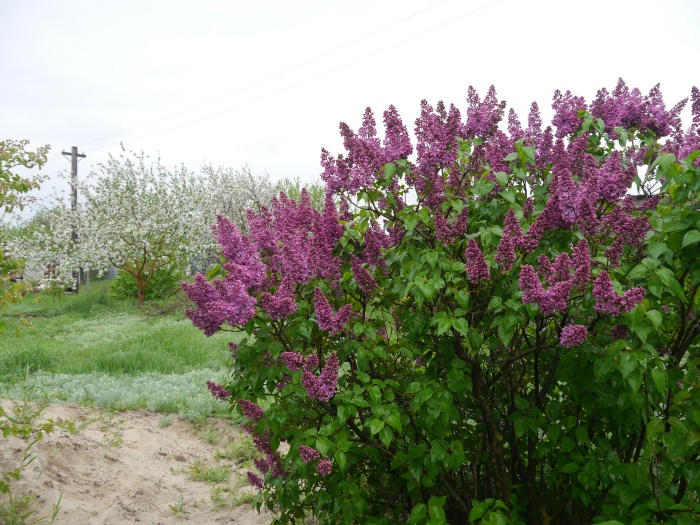
Content
How to care for lilacs after flowering and in autumn so that it blooms magnificently next year
So what should you do with lilac bushes in the fall? As a rule, autumn shrub care includes the following activities:
- Pruning and removing faded inflorescences (after flowering).
This is the most important procedure, so we'll talk about it in more detail in a separate paragraph.
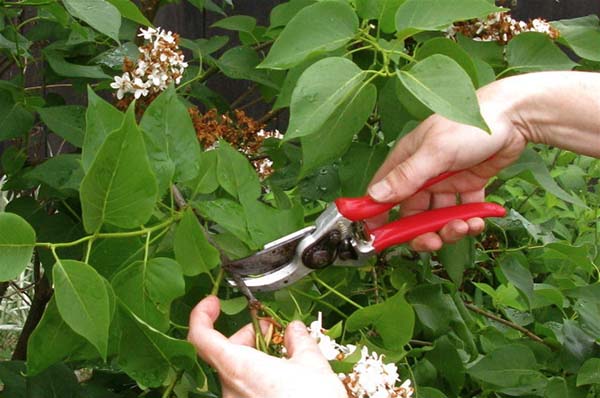
- Also, after flowering, you can perform replanting a shrub to a new location.
- Watering. Lilacs are not very demanding on moisture, so they tolerate long dry weather very well. However, moisture is very much needed by the shrub during the autumn growth of roots, therefore, in September-October, water-charging irrigation is carried out, pouring 3-5 buckets of water under each bush (you do not need to drag any buckets: water from a hose).
- Top dressing.
- Mulching and shelter for the winter. And we will talk about the expediency of these procedures at the very end of the article.

Video: caring for lilacs after flowering
Pruning lilacs in autumn (after flowering) and spring
Without proper pruning, lilacs will start to run wild and degenerate in a few years. It will overgrow strongly, and all inflorescences will form only at the very top. But in the center, the bush will be empty.
Next, let's talk in more detail about when and how to properly cut lilacs so that it blooms profusely and luxuriantly.

There is a common belief that the more the lilac is cut or cut, the better it will bloom. This is not at all the case, so pruning must be done in accordance with very important rules and recommendations.
Note! It is very undesirable to break the branches of blooming lilacs. The fact is that where the inflorescence (brush) is attached, there is a bifurcation of the branches. Flower buds will form on them. If you break them down, then there will be no flowering. It would be a different matter if only the inflorescence itself was broken out, and in fact it is usually broken with a branch. Therefore, the lilac may not bloom (due to improper pruning and frequent breaking off of branches).
However! Every spring, children and adults break off the blossoming branches of the lilac, and every year it blooms magnificently again.

Indeed, it is of great importance for the future flowering of lilacs its correct pruning after flowering, namely, removal of faded panicles in mid-summer - in July. Thanks to this, the shrub will stop spending energy on their nutrition and the formation of seeds, the growth of young shoots is activated in it, new flower buds begin to form.
Important! You only need to cut off the faded brush itself, without affecting the 2 lower branches, on which flower buds will form. Only in this case you can count on the most abundant and lush bloom for the next year.
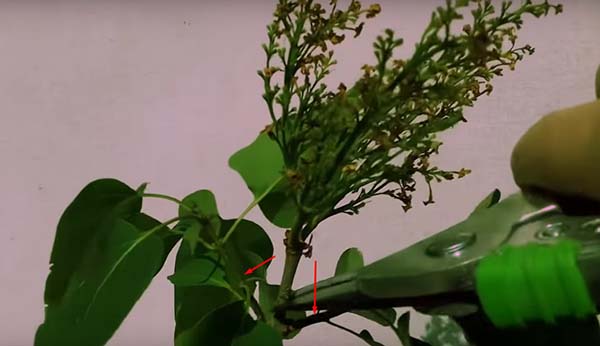
Forming and thinning pruning of lilacs imply the shortening and removal of certain parts of the plant and is carried out according to the following scheme (shown in the picture):
- old inflorescences;
- too long branches;
- directed inside the bush;
- thin and weak twigs;
- old branches;
By the way! In addition to branches that are too long and old, it is necessary to remove and excess root growth.

Thus, in order to maintain a beautiful shrub shape, as well as for its abundant flowering, lilac pruning must be done on a regular and systematic basis.
About, how to properly prune lilacs, you can watch in the following video:
And additional theoretical schemes for pruning lilacs and an explanation of why you need to do this way, you will find in this video:
Of course, you should not forget every spring and during the summer and autumn perform sanitary pruningdeleting all damaged and dry branches.
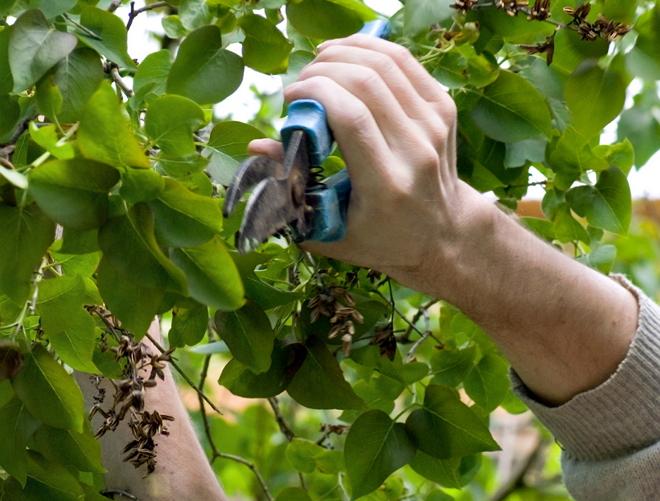
If you received an old and overgrown lilac along with the plot, then in order to bring it back to life, you need to carry out its anti-aging pruning. As for the timing, it is usually recommended to do this in early spring or after flowering.
The essence of "cardinal" cropping is shown in the picture.Namely, you need to cut off all old branches very strongly and low, as well as completely get rid of excess root growth.
However, it is not necessary to cut the lilac so much to rejuvenate it: it is enough just to shorten all branches to the required length, but first thinning it (completely remove excess thickening shoots, as well as root growth).
Yes, this and / or next year will no longer bloom such lilacs, but in any case you will have to sacrifice something.

Autumn feeding of lilac
In autumn, under lilacs, it is recommended to make phosphoric-potassium fertilizers (once every 2-3 years). For example, you can dry 2-3 tbsp. spoons superphosphate and 2-3 st. tablespoons of potassium sulfate per 1 bush, or 2-3 tbsp. spoons of nitroammophoska or even better diammophoska. Or you can also perform liquid feeding wood ashby dissolving 100-200 grams of ash in 10 liters of water.
Lilac loves alkaline soils, therefore, if your soil is acidic (yellow leaves, chlorous), then you should deoxidize it. Namely, it is worth pouring under the bush dolomite flour or fertilize more often wood ash.
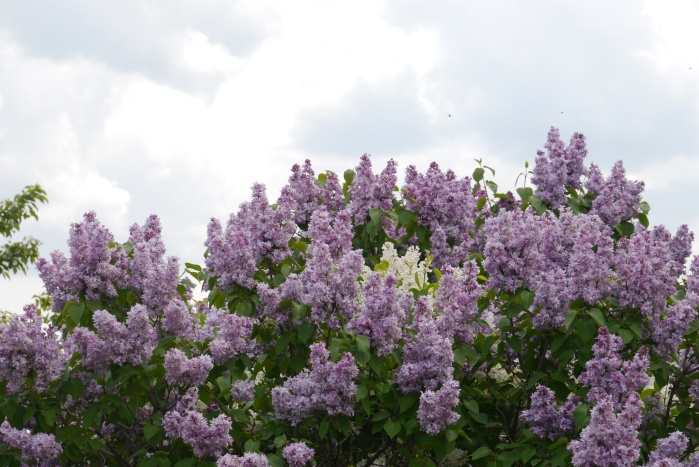
Do I need to cover lilacs for the winter
The short answer is no, it is not necessary. Adult lilacs are not sheltered for the winter (even in Siberia and the Urals), since the plant is very hardy and does not freeze in winter.
Actually, it is difficult to imagine at all the shelter of such a lush bush.
However, recently planted lilac bushes can still be slightly insulated for the winter, for example, by mulching their trunk circle. But not more!
Typical mistakes in autumn care for lilacs
- The most dangerous mistake that many amateur flower growers make, which is why their lilacs do not bloom next year, is incorrect pruning of inflorescences. Namely, they break out the inflorescences together with the twigs, on which flower buds should form in the future.
- In no case should plants be fed with nitrogen fertilizers in autumn.
It is believed that lilacs, in principle, should not be given organic matter, in which there is just a lot of nitrogen.
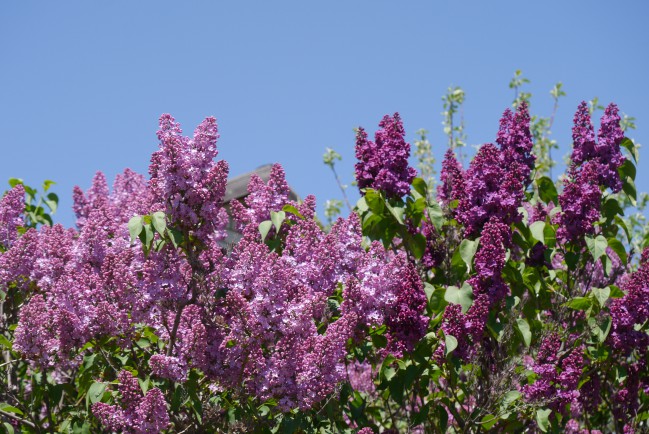
Well, there is nothing difficult in caring for lilacs after flowering: somehow you don't need to prepare it especially for winter, just cut off faded inflorescences correctly.
Video: tips for the care and cultivation of lilacs from Andrey Tumanov

